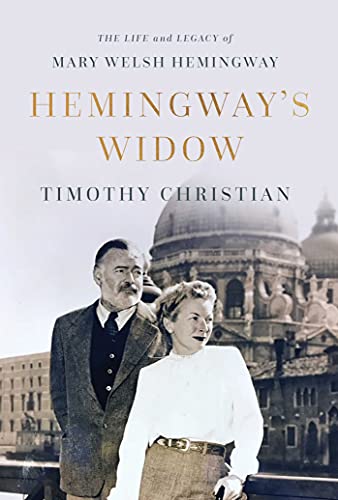Hemingway’s Widow: The Life and Legacy of Mary Welsh Hemingway
Canadian biographer and former law professor Christian’s meticulous archival research, interviews with people who knew Mary Hemingway, and quotes from her memoir, How It Was, strive to paint an honest portrait and fresh analysis of her complex life. It includes H. R. Stoneback’s preface, extensive footnotes, and a bibliography of six pages. The bulk of the book delineates her relationship with her famous husband.
The initial five chapters, which focus only on Mary, prove the most insightful and are an enchanting read about the petite blonde’s bold spirit. Her father fostered her writing, and they sang Irish ballads together as they sailed the Northland delivering timber from the Minnesota woods and later listening to Chopin and Hamlet. She succeeded as a journalist writing for Time magazine during the London Blitz. Though married to Australian journalist, Noel Monks, Mary juggled relationships with General Bob McClure and handsome American novelist Ian Shaw, whom she described as “the best lay in Europe.” Enter Hemingway, writing for Colliers, who pursued her relentlessly. She had doubts. Though Shaw was her first choice; she agreed to marry Hemingway. This one choice changed her life dramatically, for good or ill. Through countless examples, Christian describes their volatile, codependent pairing. The drama increased as they moved to La Finca Vigia in Cuba. Hemingway insisted she give up her career, becoming his emotional anchor and supporting his creative power. His charisma dominated their social life as her personality melted away.
Drinking to excess, the Pulitzer Prize winner and Nobel laureate was a narcissist and a cruel bully. Much of the book exposes their back-and-forth relationship. Many times, she thought to leave, yet she loved him and the lifestyle. Christian creates sympathy for her. After Hemingway’s death, the book skews off course into a series of separate essays as Mary tenaciously protects his legacy.










